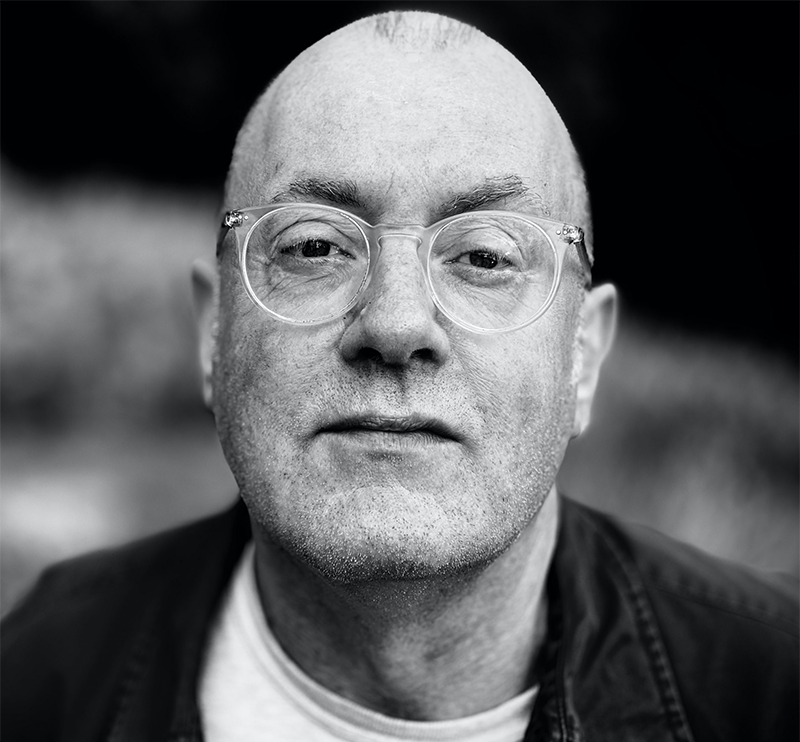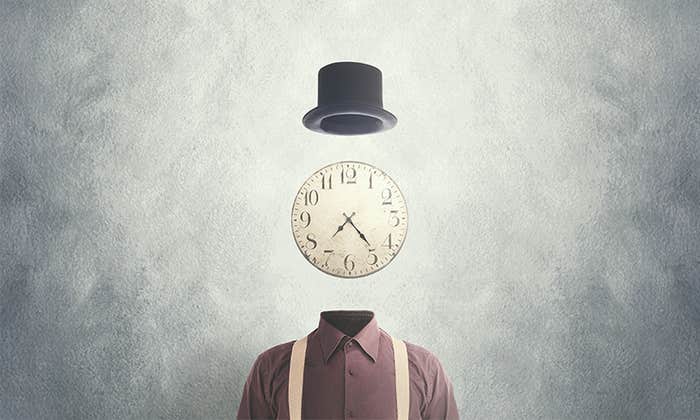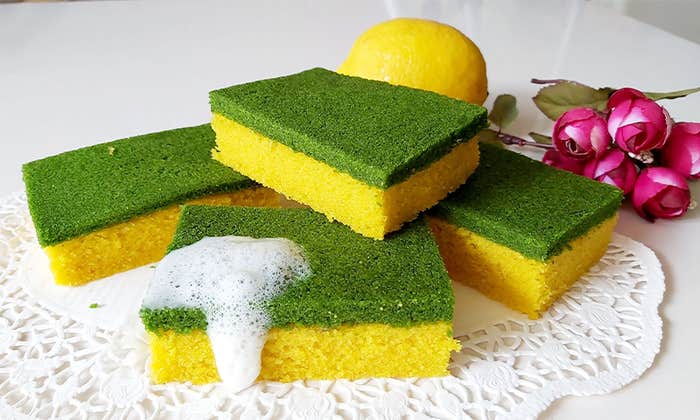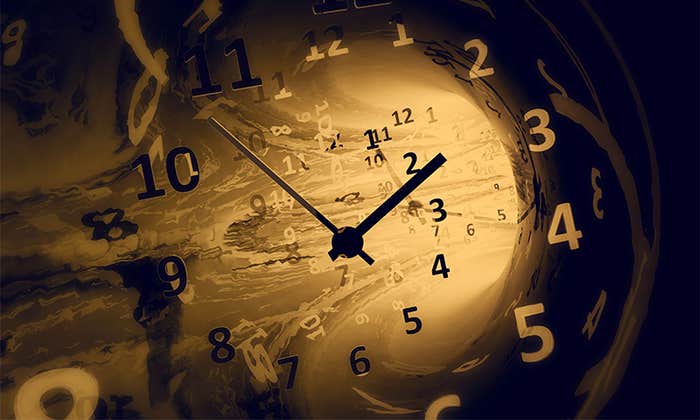It’s remarkable how fast psychedelics have gone mainstream. It’s not just the craze for microdosing or the enthusiasm for mushroom grow kits. After years of shunning this research, major universities are now racing to set up their own psychedelic institutes, with psilocybin and MDMA being touted as the most promising treatments for depression and PTSD in decades.
But this is not the first time psychoactive drugs have been hailed as miracle cures. Over the past two centuries, morphine, heroin, and cocaine were also considered wonder drugs until doctors discovered their addictive properties. Today, what’s striking is how the public conversation about psychedelics tends to ignore this deeper history of psychoactive drugs.
The one place we can’t accompany our patients is over the threshold into madness.
Historian Mike Jay is out to challenge this narrative of psychedelic exceptionalism. Through a series of books on the history of intoxicants, he’s traced the lineage of various drug cultures. His new book, Psychonauts: Drugs and the Making of the Modern Mind, focuses on the 19th century’s rich history of psychoactive experiences, spanning the worlds of science and literature. In some ways, this era had a more expansive and nuanced view of drugs and the exploration of consciousness than we do today, where the medical model dominates the public discourse on psychedelics.
Jay is upfront about his own psychedelic experiences. “I’ve experimented thoroughly with all these drugs over a long period of time now,” he said when I reached him in Cornwall. His tripping led him to recalibrate his own image of reality, but he doesn’t gloss over how challenging these experiences can be. In his earlier book on the history of mescaline, he writes about one encounter with the psychoactive cactus San Pedro: “As pleasure and discomfort mingled and intensified, it was easy to understand how some subjects feel themselves transported to the realms of the divine while others retire miserably to their sickbeds.”
Jay also wades into the contentious question of whether the scientists and doctors studying psychedelics should talk openly about their own experiences. “The analogy I use is travel writing,” he says. “You could write a book about Venice without going there because you can read all the other books about Venice, but it’s hard to argue that your book wouldn’t be better if you had actually been to Venice yourself.”

We seem to be at a crossroads in how to think about psychedelics. There’s a strong push to medicalize these substances, but psychoactive experiences have always been unpredictable and wild. What do you make of the current psychedelic moment?
I think what we might call drugs—or more specifically, psychedelics—sit on a kind of cultural fault line that we’ve inherited from the 20th century. There are two words that emerged during the 20th century. The first is “drugs” in the sense that we’re using it. That word is a product of the Progressive Era in the early 20th century. From the very beginning, it had a whole bunch of negative connotations baked into it. There were dangerous drugs, addictive drugs, criminally illicit drugs. Think of “the war on drugs.” When I was growing up, I assumed it had been going on forever, so it was surprising to discover that it’s actually a creation of the 20th century. Then in the mid-20th century, there was much more interest in mystical experience and the possibility of using drugs for personal growth or healing. That was the point at which the word “psychedelics” emerged.
The psychiatrist Humphry Osmond coined this word because he didn’t like the word “drugs.” The literal meaning of psychedelic is “mind-revealing,” which has a much more positive ring to it.
Osmond and Aldous Huxley came up with that term together. They were really talking about LSD and mescaline then. Huxley was very keen that it should be connected to mystical experience and higher consciousness. I think one reason the word “drugs” became so handy at the beginning of the 20th century was to separate substances into good and bad. The good you would get in your pharmacy or from a doctor; the bad you’d have to get from the street, from criminals. That distinction has broken down in the 21st century, when cannabis is for sale everywhere and the potential for psychedelics has only gotten stronger.
Weren’t many drugs that we now consider dangerous, like heroin and cocaine, once easily obtained?
That’s right. It’s why our modern category of drugs wouldn’t have made any sense in the 19th century because they just sat on the shelves alongside other stimulants and sedatives and analgesics that we now call drugs. One thing that fascinates me about this period is how widely drugs were used in science and medicine, and how interested people were in the experiences they produced. There’s a rich literature back then because doctors in the 19th century were very good at describing things. You had to be. There were no tick-box diagnoses. If somebody had a cough, you couldn’t just say they had a cough. There might be 50 adjectives to describe that cough.
Another reason doctors and scientists were so good at describing these experiences is they often took the drugs themselves.
Yes, and I’ve taken that as the central theme of my book. If you’re studying a drug which affects the mind and alters consciousness, the experience itself is really what you’re looking at. And if that’s the focus of your investigation, why wouldn’t you start by experiencing it yourself?
It wasn’t that Freud had taken too much cocaine. He’d taken too little.
The word “psychonaut” is often used to describe people who take hallucinogens for self-exploration. The word was coined in 1949 by the German writer Ernst Junger, who is a fascinating and problematic figure. He was the mentor of Albert Hofmann, who synthesized LSD, but Junger was once a Nazi sympathizer.
He later resisted Nazi efforts to recruit him, but he also refused to submit to de-Nazification in postwar American-occupied Germany. During that time, he wrote a futuristic novel called Heliopolis, in which a cadre of scientists synthesize new psychoactive drugs and use them to explore their consciousness. These scientists are called psychonauts. Junger was the great hero and mentor to Albert Hofmann, and through Hofmann, the word psychonaut made its way into the psychedelic counterculture. It meant someone who was a rebel or renegade or was working outside of science. Because in our modern era, institutional scientists don’t self-experiment with their drugs.
At least they don’t talk about it publicly. I’d bet that most scientists who study psychedelics have tripped themselves, even though it’s usually illegal. I mean, can you actually understand these experiences if you haven’t had them?
I think it’s enormously valuable to have direct personal experience because what we’re studying is a sensation that’s only available to the subject. Otherwise, you’re just studying its correlates. I wanted to reclaim the word “psychonauts” and take it back into the 19th century, where it describes not only renegades and rebels, but also establishment scientists, doctors, and pillars of the literary establishment. The word that was used at the time was “self-experimenter.”
There is no perfect or correct way to do self-experimentation. Part of you is an observer and part of you is a subject, and you’re trying to find the right point between objective data and a fuller sense of the subjective experience. So maybe you end up with a hybrid of science and literature. If you look at the psychedelic literature today, most of it is composed of very dry papers on neuroscience and receptor chemistry, but then you look at the towering bestseller of the psychedelic renaissance, Michael Pollan’s book How to Change Your Mind, and he’s using lots of metaphors about our minds getting stuck in ruts and psychedelics connecting different areas of the brain. But I think what really attracted people to his book were his descriptions of his self-experiments. What does it feel like? What might it do for me?
You can see this cross-fertilization between science and literature at the beginning of the 19th century, when the English chemist Humphry Davy discovered the mind-blowing properties of nitrous oxide and then recruited some of his poet friends to join in these experiments.
Humphry Davy went on to become the president of the Royal Society and the great scientific hero of his generation. When he was 20, he was one of the first scientists to synthesize nitrous oxide, which was believed to be toxic. But in the heroic self-experimental tradition, he found out that not only was it not toxic, but it produced a wave of euphoria. He inhaled a bit more and eventually found himself in this disembodied universe composed of thoughts and ideas, and he came back absolutely fascinated.
Part of you is an observer and part of you is a subject.
He was very fortunate to have a group of friends in Bristol who were ideally suited as volunteers, including the young Romantic poets Samuel Taylor Coleridge and Robert Southey. Davy was looking for a language of feeling, but it’s incredibly hard to find words for it. In a way, it was rather like the Romantic poets’ own project of finding words to describe new feelings and sensations. So from this point on, the study of drugs was still about pharmacy and chemistry, but it also became about poetry and philosophy.
One of Coleridge’s protégés, the Romantic poet Thomas De Quincey, later wrote his own book, Confessions of an English Opium-Eater. What was distinctive about this book?
He was doing something very original. The book is not actually about opium. It’s about the opium eater. So he’s using opium to open up a new form of autobiography. He writes about how he takes opium and wanders around London at night, losing himself in the theater crowds and having reveries. And suddenly these childhood memories will pop up that he hasn’t thought of for ages. Extraordinary dreams will appear, and he has the sense that on opium he can wander the labyrinth of his mind and connect all these different visions and memories and sensations.
By the mid-19th century, many people were using psychoactive substances. Can you tell me about the French physician Jacques-Joseph Moreau?
Moreau was what we would now call a psychiatrist. He often accompanied his wealthy patients on rest tours, so he went to Egypt, where he was fascinated by the absence of alcohol and the prevalence of hashish. People who took hashish would talk about their dreams and visions and their encounters with jinn and other supernatural entities. He got fascinated enough to take large oral doses of hashish and was unable to move or speak for hours.
As a psychiatrist, he believes in walking as far as you can in your patients’ shoes, but the one place where we can’t accompany our patients is over the threshold into madness. But with hashish he noticed in himself so many of the phenomena that he was treating in his patients—hallucinations, deliriums, and paranoid ideation. And just as Humphry Davy had done with the Romantic poets, Moreau started a literary hashish salon in Paris. Many of the great figures of mid-19th century French literary culture—like Balzac, Dumas, Flaubert, and Baudelaire—passed through its doors.
One of the most intriguing cases of self-experimentation was Sigmund Freud, who became obsessed with cocaine early in his career. Why did he think cocaine was so promising?
The great disease of the late 19th century was neurasthenia. It’s not a term we use anymore, but when we’re talking about anxiety or depression or autoimmune conditions, these would often have been diagnosed as neurasthenia. There was a feeling that society had started to run on the rapid time of the machine, and a lot of people were having nervous breakdowns or suffering what we’d now call burnout. So everybody was looking for a stimulant that could magically provide more energy, and Freud thought cocaine might be the thing that would bring us up to speed with modern life. In the mid-1880s, he was often referred to as the world’s leading medical expert on cocaine.
Did he take much cocaine himself?
It’s often assumed that he took huge quantities, but my feeling is that the opposite is the case. He was a sober and cautious fellow, and he took it in very small doses. I think the problem with his self-experimentation was that he only ever took a small dose, usually dissolved in water. So a few years later, when people discovered that you could inject enormous quantities of cocaine and then almost immediately go into manic states of collapse and nervous breakdown, Freud was blindsided by this. It wasn’t that he’d taken too much cocaine. He’d taken too little. It was around this time that our modern medical notion of addiction was coming into focus.
Didn’t Freud then try to erase his early work on cocaine from the historical record?
There’s maybe one sentence about it in his short autobiography, but when his collected works were finally reprinted, the cocaine papers weren’t in it. And his first biographer, Ernest Jones, minimized it and described it as the “cocaine episode.” He just dismissed it as a juvenile aberration, and that’s the line that his followers have tended to follow ever since.
I would like to see a thousand flowers bloom.
William James was another late 19th-century psychologist who self-experimented. Why did he take nitrous oxide?
Like Freud, he diagnosed himself as neurasthenic. He took nitrous oxide in the early 1880s, and I think it was an experience that really stuck with him because he’d always been interested in mystical experience, but he’d never really had one himself, and he’d felt that he was kind of a cold, rational soul who was never going to have one. So James’ nitrous oxide experience was a revelation for him personally as well as professionally. He saw introspection as central to the study of the mind. He was in a world, as we are now, where the mainstream science of the mind was very positivist. James thought the mind was much more complicated than that. He described it as a “blooming buzzing confusion.” He was trying to find ways of exploring the mind in broader terms that verged on literature and philosophy within a paradigm that was becoming more and more rigid.
Why did drugs become so stigmatized in the early 20th century?
I think there are many components to it. If you look at the word “drugs” that emerged at that time, you can see there are medical concerns that drugs are addictive and bad for your health and should only be used under the supervision of a doctor. This is also the Progressive Era, when all kinds of grassroots campaigns were starting to increase the scope of government, leading up to alcohol prohibition. At this time, alcohol is regarded as the most problematic substance. How can we possibly have a civilized society in the 20th century where people are allowed to get drunk all the time? Psychology itself is moving away from introspection. This is the beginning of behaviorism, so we’re going to be more productive running our laboratory rats through mazes than listening to people pontificating about their drug experiences.
What can this long history of psychoactive drugs tell us about our current psychedelic renaissance?
It gives us a very different way of thinking about where we are now. The prevailing assumption is that this kind of drug experience suddenly emerged in the 1950s and 1960s and was summarily squashed by mainstream science and medicine, and we’re now just beginning to recover it. But the story I’m telling about the 19th century shows a rather different picture. It suggests that the things we’re interested in today—the power of drugs to be therapeutic and to open up dimensions of thought and experience that we wouldn’t otherwise discover—go all the way back to the Scientific Revolution. Many of the questions we’re asking now are exactly what scientists and writers and doctors were asking in the 19th century, but they weren’t using DMT and ketamine. They were using ether or nitrous oxide or hashish. What happens when we take drugs that disembody us and take us into realms of pure experience? Is it simply white noise produced by a drug-addled brain? Or do these experiences connect us to other dimensions of mind that we can’t normally access?
Where do you hope the current psychedelic movement will go from here?
I would like to see a thousand flowers bloom. A lot of people who are now interested in psychedelics would use them privately. You might describe that as self-medication or recreational or spiritual. Some people will want to have shamanic or mindfulness guides for this experience; others will doubtless want state-approved clinical psychotherapists. It seems to me the entire conversation at the moment is on this very tricky question of how the medical profession manages and licenses this.
All those questions are important, but I’d like to see more attention being paid to the fact that there are other models beyond the medical and beyond the therapeutic. We’re starting to see this with the first steps of decriminalization of plant psychedelics in Oregon and Colorado, what I might call a bottom-up model, which I hope might complement the top-down medical model. ![]()
Steve Paulson is the executive producer of Wisconsin Public Radio’s nationally-syndicated show To the Best of Our Knowledge. He’s the author of Atoms and Eden: Conversations on Religion and Science. You can find his podcast about psychedelics, Luminous, here.
Read about scientists’ early attempts to study psychedelic drugs, in “The 19th-Century Trippers Who Probed the Mind.”
Lead image: Tasnuva Elahi, from images by Iagsandrew and Jorm Sangsorn / Shutterstock




























